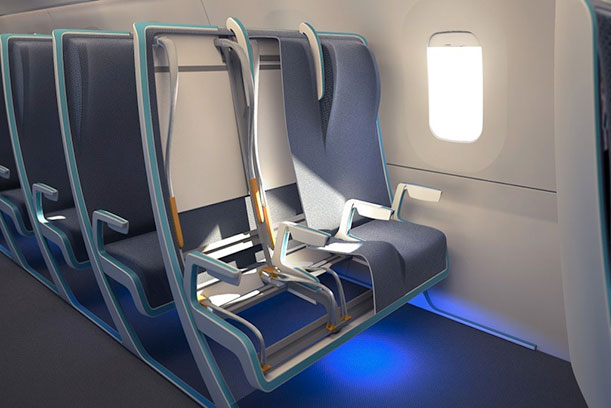This New Plane Seat Morphs to Make You and Your Seatmate More Comfortable
Shape-shifting seats with adjustable widths promise more choice for passengers, but aren’t they really a sneaky way to discriminate?
/https://tf-cmsv2-smithsonianmag-media.s3.amazonaws.com/filer/20131119114100morph-chart-web.jpg)
It’s either grossly unfair or perfectly logical. With fuel prices perpetually on the rise, airlines are enacting measures to account for the cost of any additional weight loaded onto each flight. While fees for extra baggage can be irritating for customers, a recent trend toward also metering human poundage risks really rubbing people the wrong way.
For instance, Samoa Airlines courted controversy earlier this year when the company announced that it would start setting ticket prices according to a person’s weight. In an interview with Australia’s ABC Radio, CEO Chris Langton defended the new business model as “the fairest way of traveling.” Past research has found that 59 percent of men and 71 percent of women living in American Samoa were obese. And in 2009, Michael O’Leary, the outspoken CEO of European discount airline Ryan Air, floated the idea of levying a tax on those deemed overweight, reasoning that the obesity problem has gotten so bad that passengers do not want to “tax fat people but torture them.”
Credit: Seymourpowell
Others in the industry are taking a milder, more diplomatic tact. Citing “trends in demographics,” aircraft manufacturer Airbus has given airlines the option of installing wider seats for customers who can’t fit into standard arrangements. And now Seymourpowell, a British design firm, has proposed a concept for adjustable seats that can morph to the space-demands and contours of an individual’s body.
To drum up interest, the design team produced a video that carefully glossed over the more controversial aspects of their idea; it kindly noted that “all people are different” while playing up the seating arrangement’s benefits to customers and airlines, such as “more choice for customers’ and “flexibility for airlines.” Rather than upgrading all the way up to first class, people can simply purchase enough space to feel comfortable or even lie down, which is the biggest draw of business class anyway. There’s even a case to be made that space-tiered pricing would bring down the cost for many passengers overall.
The best way to understand how the “Morph” works is to envision a row of seats as one long bench. In its default arrangement, the system resembles the standard 18-inch 3 x 1 window and aisle seating found on many commercial aircraft. But for each seat to be modifiable, the traditional foam cushions are replaced with a long flexible, yet strong fabric that’s stretched over the bottom part, with another large piece covering the entire back portion. A series of moving parts and mechanisms allows the seat to mold itself to the passenger’s particular shape and preferences. The system has an adjustable handrest and seat divider frame that can slide sideways and clamp down to form the desired dimensions. So, if a family of three purchases a row of seats—one for mom, one for dad and one for a small child, they can share the space accordingly. You can see a few different seating patterns in the illustration below.
Although this is only in the conceptual stage, it’s pretty much inevitable that airlines’ approach toward passenger seats will undergo a sea change of sorts at some point in the near future. Much of the cost-cutting, which began with minute changes, like revoking the complimentary peanuts, has gotten more serious. Some companies are experimenting with thinner seats to allow for additional rows. Ryan Air, with it’s reputation for nickel and diming passengers, has even floated the idea of having a “standing cabin” in place of the last ten rows of seats, allowing more people to pack aboard an aircraft. And considering the finesse airlines take in reframing what can be a dicey and sensitive public relations matter as a way to provide passengers more choice, should anyone be shocked that major manufacturers such as Boeing and Airbus are already interested?
“One airline told us that if they have an oversized passenger, they make them buy two seats,” says Jeremy White, head of transport at Seymourpowell. “I can’t think of anything more degrading or humiliating than forcing someone to buy two seats because they are a bit wide. Would they rather that, than tune their seats for a few more bucks so it fits them?”
While no one wants to sit next to someone who spills over his or her own personal space, isn’t this new seating arrangement, underneath it all, just an elegantly disguised means to discriminate?
/https://tf-cmsv2-smithsonianmag-media.s3.amazonaws.com/accounts/headshot/tuan-nguyen.jpg)



/https://tf-cmsv2-smithsonianmag-media.s3.amazonaws.com/accounts/headshot/tuan-nguyen.jpg)